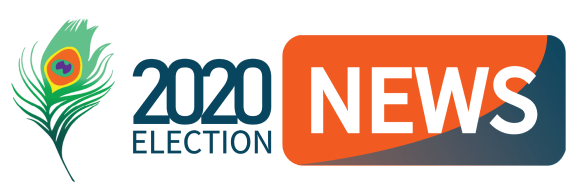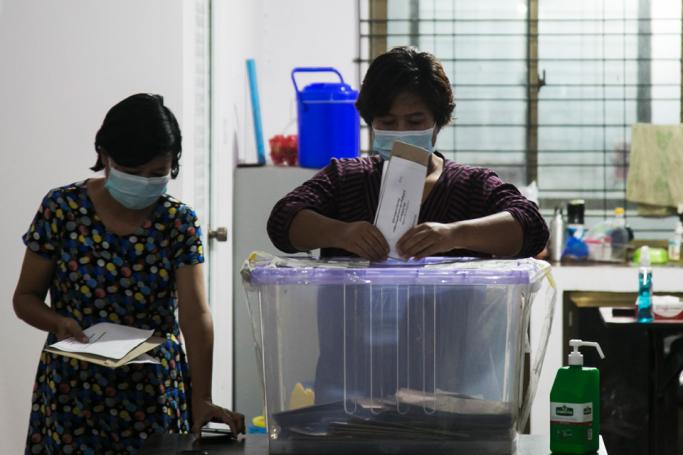This election is shaping up to be less about the democratic optimism that brought the National League for Democracy (NLD) finally to power in 2015 and more about political realities brought on by a flagging economy, an unresolved civil war, international pressure over accusations of genocide, and a resurging pandemic.
Frontrunner NLD
In 2015 the NLD won a landslide, securing 255 of the available 330 seats in the 440-member lower house and 135 of the 168 seats in the upper house. The party won by similar margins in the 14 state and regional assemblies. The exception was Rakhine State where the Arakan National Party won the most seats.
Yet, the NLD may not have an easy a go of it this time around. A widespread perception has grown among urban and ethnic voters that Aung San Suu Kyi and the NLD have not delivered on their promises. The NLD has been criticized for its lackluster economic record. In urban areas there is a feeling the NLD has failed to deliver on promises of democratic reform and economic development.
Still, the NLD’s platform as stated in its election manifesto seems to touch all the right bases. The document made several main election pledges: to address ethnic affairs and achieve a peace settlement and to achieve a constitution that ensures a genuine democratic federal union, and sustainable development.
A key element of the manifesto was a pledge to work to ensure the military worked for the protection of citizens and upholds the policies of the democratically elected government. This is a tall order considering the military’s long involvement in politics, including 25 percent appointed membership to both houses of parliament at the national, regional and state levels.
In addition, the NLD pledged to protect the rights of ethnic people, to form a corruption-free government, to establish a fair and impartial judiciary, and to amend, repeal, and rewrite existing laws to be in line with democratic standards.
Meeting pledges
These are all great pledges, most of which are the same it made in 2015 and as of yet have not been fully fulfilled. To be sure most of these issues have no easy fixes and will take years to sort
out. However, in democratic politics, which Myanmar is still getting a grip on, a party is gauged by its ability to meet its pledges, and the NLD has been found wanting on several fronts.
The COVID-19 virus and consequent ban on mass rallies has made it difficult to gauge support for the NLD. However, Aung San Suu Kyi’s standing among rural ethnic Bamar voters appears to remain strong. In ethnic areas and among the urban middle class, however, there is dissatisfaction with perceived poor governance, slow economic reform, and failure to secure a lasting peace – the latter being a signature national policy for the NLD.
In addition to perceived policy shortfalls, the NLD may be greatly hindered if the voter turnout is low due to COVID-19. A high turnout and a resounding electoral win is seen by analysts as necessary for a renewed reform push. These reforms are expected to include constitutional amendments reducing the military’s power in politics, which in turn would cement Aung San Suu Kyi’s legacy as a democratic reformer.
There is some reason to believe that voter turnout, especially in Yangon, will be lower than expected. A survey conducted by local election observer group People’s Alliance for Credible Elections (PACE) determined that only 30 percent of respondents said they were interested in politics. In 2015 that figure was 43 percent. It should be noted the survey was conducted between August 3 and 5, before Myanmar’s virus infection numbers began their steep climb. The pandemic has people concerned more with their health and livelihoods than politics. Yet, the PACE survey indicated that trust in the State Counselor has increased since last year, from 70 percent last year to 79 percent this year.
In perhaps an attempt to shore up votes, the NLD has made “pork-barrel” promises to win votes in Naypyidaw that include a vow to award senior civil servants, security forces personnel, and other state employees special, potentially tax-free import car licenses. The move is a revival of a proposal previously suspended earlier in the year due to an outcry by public and industry because it ran counter to the NLD’s clean government pledge and automotive policies. Suu Kyi, herself, pledged not to hand out car import certificates to officials before entering government.
USDP and other alternatives
Popular support for the NLD has been waning in ethnic areas and urban areas. The party failed to repeat its landslide win in November 2018 by-elections where the NLD won only six of 13 contested sears in state, regional and national parliaments.
The NLD’s main contender is the Union Solidarity and Development Party (USDP), a party still widely viewed as the military-backed party, with good reason. Initially set up as a mass political organization by the former authoritarian State Peace and Development Council, after conversion to a political party for the 2010 elections a large number of retired high-ranking military officers joined its ranks. Even with efforts by the party to reshape itself, following its
rout in the 2015 elections, it is still widely associated with military rule and not as the best option for a democratic and prosperous future.
The USDP’s association with the military and years of dictatorship has hindered its appeal vis-à-vis the NLD, especially in urban areas. Indeed, in the PACE survey, the USDP was seen by only 7 percent of respondents as representing their interests, as opposed to 39 percent for the NLD. In addition, the USDP topped the survey’s “unpopularity” category with 215 of respondents saying they have a negative view of the party. The other 15 major parties in the survey averaged between 5 and 8 percent.
The USDP’s efforts have failed to win over voters disenchanted with the NLD. However, regional parties have made significant gains that could make it difficult for the NLD to form a government outright after the 2020 elections.
While the USDP will remain an outsider in distant second to the NLD, newer political forces are shaping up. Ex-NLD MPs who remain popular may run as independents, others have made moves to form new parties. Either way, these options present a challenge to the NLD’s previous pervasive support.
The difference between 2020 and previous elections is that now there are real alternatives in Yangon and other urban centres. In ethnic areas too, where many voted for the NLD in 2015 because they were seen as a real democratic alternative, the NLD has apparently lost considerable popularity.
Few expect the NLD to lose in the elections, but the results in ethnic areas could prove pivotal to how the NLD shapes its policies going forward. Should the ethnic parties perform better than 2015, as expected, then the NLD will be faced with a choice between accepting some policy direction from this front, or further alienate a grouping commanding more than a quarter of seats in the lower house.
This could make an alliance with a bloc of ethnic parties crucial for the NLD to secure an absolute majority. Ethnic parties are likely to receive more support this time around than in 2015 when many ethnic people voted for the NLD. This is largely due to a feeling of growing alienation from the NLD since 2015 due to the NLD’s inability to secure peace and a perceived continued disenfranchisement of ethnic minority populations despite NLD promises. There is hope the ethnic parties can win enough seats to form a bloc which either the NLD or USDP will need to seek out to secure a majority in parliament and the government.
The ethnic vote, however, is handicapped by the continuing civil war in several parts of the country and an unresolved peace process in others. As the polls near, fighting between the Arakan Army and the Tatmadaw, Myanmar’s armed forces, has grown. Western Rakhine State was recently declared a non-voting area by the Myanmar’s Union Election Commission, as were areas of Kachin, Shan, and Karen states.
COVID-19 disruption
Outside of competing party platforms and allegiances to ethnicity, region, state, or even the military, the election will be shaped by the COVID-19 pandemic. With only three weeks left before the election the country is grappling with a rising number of COVID-19 positive cases that has led the authorities to force lockdowns in Yangon and many urban centres across the country. The perceived health risk of going to the polls is expected to keep many voters away from the polls.
The campaigning activities of all parties have been hindered by the rising number of COVID-19 cases since mid-August and the resulting restrictions on holding public events. Yangon and several other major areas remain under lockdown or Stay at Home orders to varying degrees.
In response the NLD and other parties have embarked on unprecedented Facebook campaign outreach to the voters. For the NLD this has relied heavily on Aung San Suu Kyi’s presence on the platform. Yet her fellow party members also occupy space on Facebook and reinforce her campaign. The NLD’s online message is reinforced by offline campaigning and vice versa.
The NLD’s attempt to overcome the logistical challenges posed by the pandemic has made digital democracy and popular culture key elements in its strategy.
Despite the coronavirus, the election is still shaping up to be Myanmar’s first truly democratic election in decades. While the 2010 election, boycotted by the NLD, set the stage for military-managed “disciplined democracy”, and 2015 election was largely a referendum on democracy, the 2020 election is the first since 1960 where voters are thinking about how parties and politicians will shape policies that will impact their lives.












